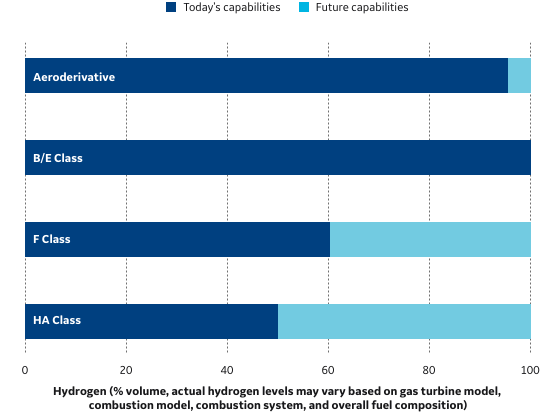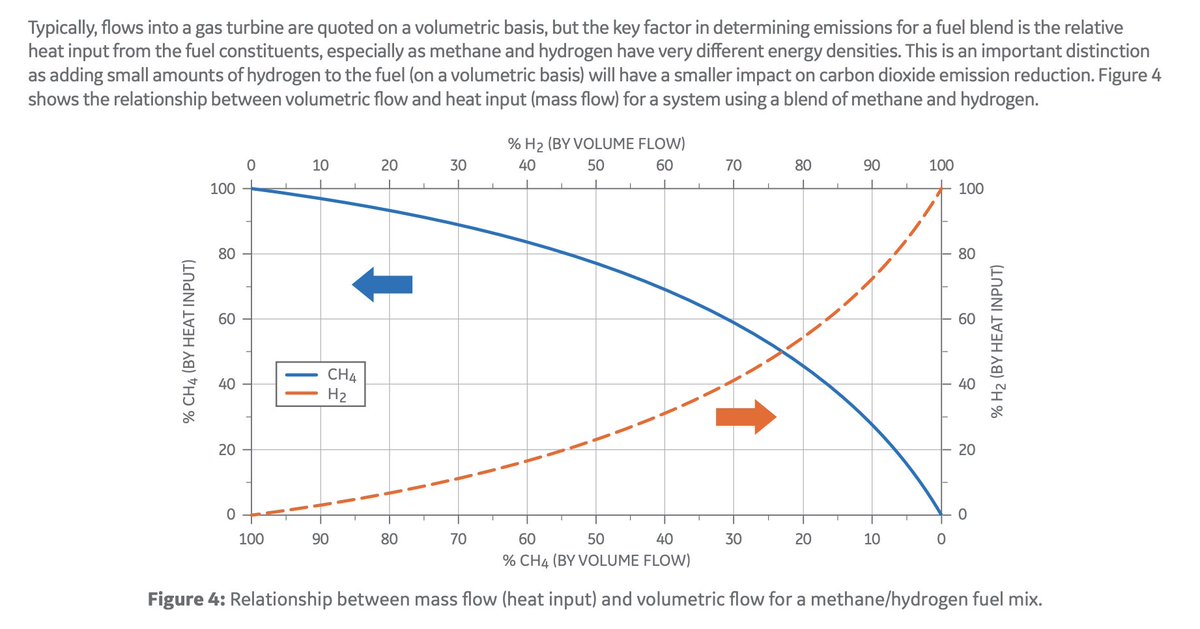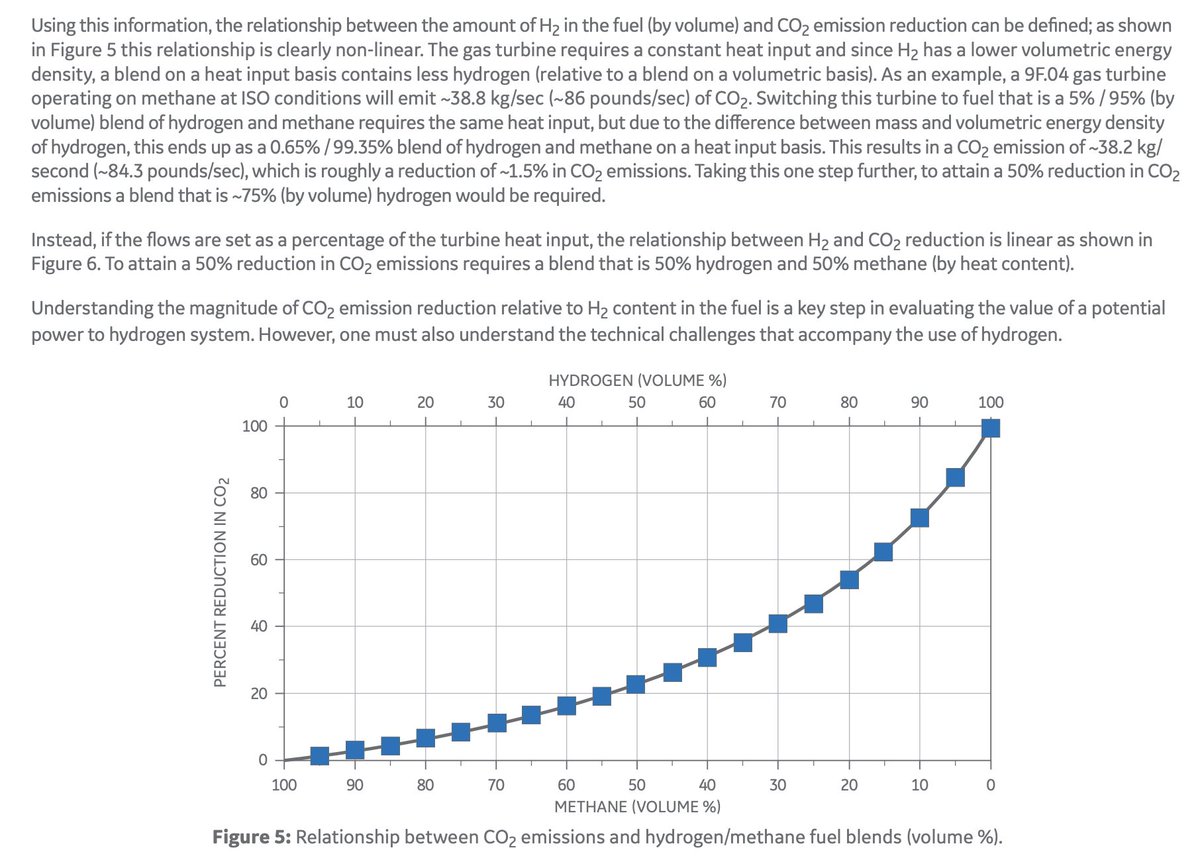ge.com/power/gas/fuel…

If I'm doing my math right then, a 60% blend of H2 by volume only reduces CO2 emissions from combustion by ~25%, not 60%.
60% hydrogen by volume reduces CO2 about 35% (not 25%) due to increased flow through combustor as H2 blend increases. Still well below 60%.








